When it comes to enjoying a delicious and juicy watermelon, one of the most important factors is knowing how to select a ripe fruit.
A ripe watermelon is full of flavor and has a perfect texture, making it a refreshing and satisfying treat. In order to choose the best watermelon, it’s essential to understand the various indicators of ripeness and how to apply them while shopping at the market or picking one from your own garden.
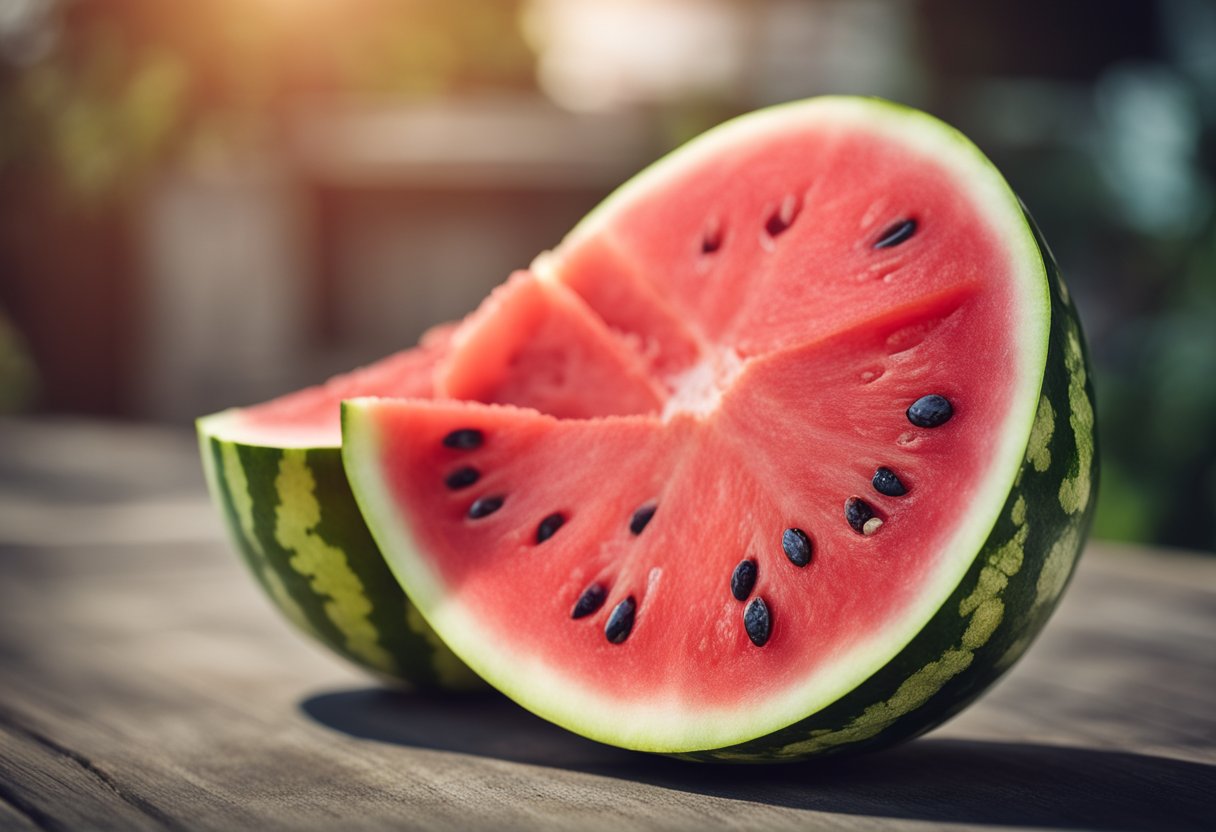
There are several methods to determine whether a watermelon is ripe or not. For instance, one of the most well-known techniques is to look for a yellow field spot on the fruit, which shows that it has been resting on the ground long enough to become fully ripe.
Another method is to perform a thump test, in which you tap the rind of the fruit and listen for a deep, hollow sound that indicates ripeness. Other factors to consider include the aroma of the watermelon and the appearance of its surface texture.
By understanding these indicators and employing multiple methods, you can confidently choose a ripe watermelon that will provide delightful and refreshing bites.
Knowing the basics of ripe watermelons
Appearance of a ripe watermelon
When determining the ripeness of a watermelon, it’s essential to look at its appearance. A ripe melon will usually have more dull skin, rather than a shiny or glossy surface.
The colors of a ripe watermelon vary from round dark green or light green stripes to a uniform green shade. Also, it will have a field spot which is a creamy, yellow spot on the rind where the watermelon touched the ground as it grew.
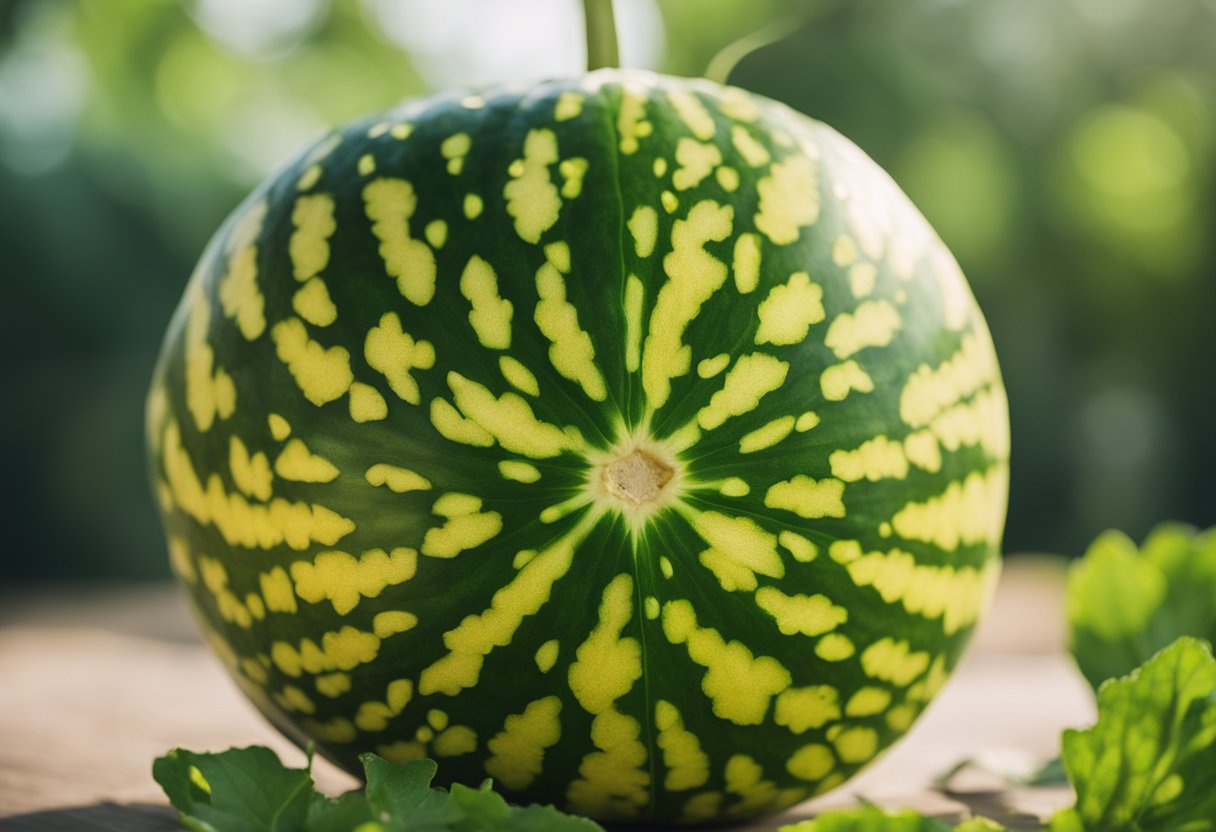
The field spot indicates the melon has been resting on the ground long enough to ripen. White or light green field spots suggest that the watermelon is not yet ripe.
Feel of a ripe watermelon
A ripe watermelon should feel heavy for its size, as this indicates that it’s full of water and juicy. The skin of ripe melons should be firm, smooth, and slightly hard; when pressed lightly, it should not give too much under your fingers.
Moreover, the blossom end, which is on the opposite side of the stem, should be slightly soft but not mushy. It’s crucial to not confuse the soft blossom end with an overall soft, mushy texture, as that can be a sign of an overripe or spoiled watermelon.
Sound of a ripe watermelon
One of the most popular methods to determine watermelon ripeness is the thump test. When you knock on the rind of a ripe watermelon with your knuckles, it should produce a deep, hollow sound, similar to knocking on a door. An unripe melon will have a more high-pitched sound, while an overripe melon might produce a dull thud.
These signs and tests, including checking the appearance, feeling the rind, and listening to the sound, can help you determine if a watermelon is ripe and ready to be eaten. By using these techniques, you can confidently select prime, juicy watermelons to enjoy during the summer season or any time of the year.
Using modern technology
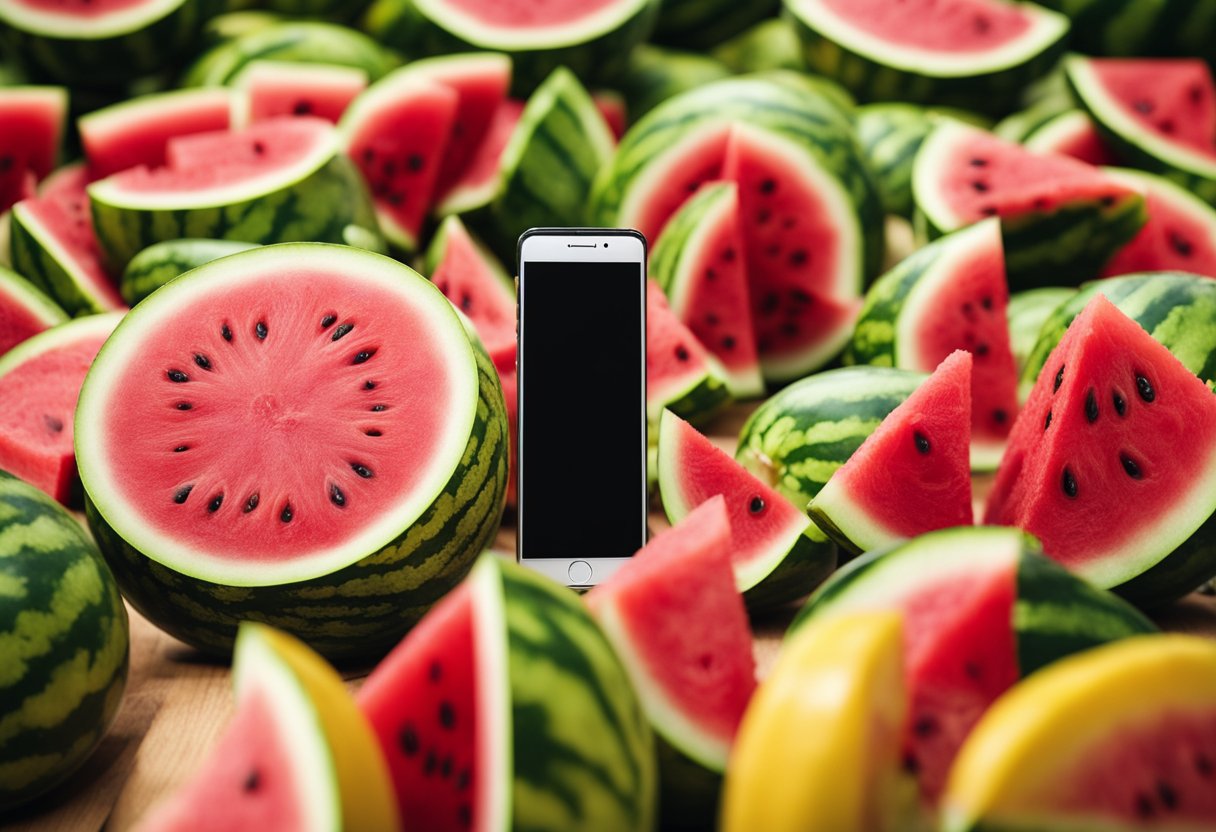
In today’s world, technology plays a significant role in almost every aspect of our lives, including determining the ripeness of a watermelon. With the advent of smartphones, there are now apps available that can assist you in identifying whether a watermelon is ripe or not.
Watermelon ripeness apps
There are several watermelon ripeness apps available for both Android and Apple platforms. These apps often use specialized algorithms and acoustic data to determine the ripeness of a watermelon. By simply tapping the watermelon and collecting sound data through the smartphone microphone, the app can provide an accurate analysis of the fruit’s condition.
Some popular watermelon ripeness apps include:
- Melon Meter: This app allows users to tap the watermelon while holding their phone nearby. The app analyzes the sound produced and gives a ripeness score.
- Watermelon Prober: With a user-friendly interface and simple instructions, this application provides guidance on where to tap the watermelon and how to interpret the sounds produced.
While these apps can be helpful as a preliminary guide, it is always essential to combine their results with traditional methods, like the thump test and checking the field spot, to ensure that the watermelon is truly ripe. This approach will give you more confidence in your ability to select the perfect watermelon.
Variations of watermelon ripeness
When examining watermelon ripeness, it is crucial to distinguish between unripe, ripe, and overripe watermelons. This section focuses on understanding the differences and identifying the signs of an unripe and overripe watermelon.
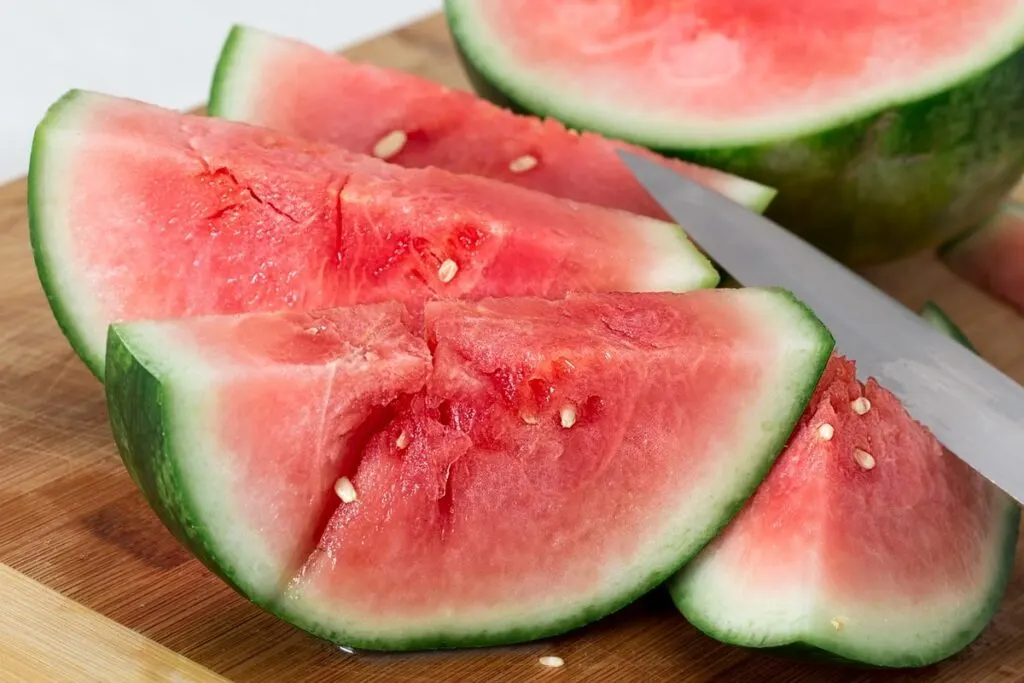
Unripe versus overripe
Unripe watermelons have a few distinguishing characteristics:
- The field spot, or the side of the melon that was resting on the ground while growing, will be whiter in color instead of the yellow or amber hue of a ripe watermelon 1.
- A thump on the rind will produce a more high-pitched resonance, rather than the deep, hollow sound of a ripe watermelon 2.
- The watermelon will not have a slightly sweet smell that indicates ripeness 3.
On the other hand, overripe watermelons may exhibit these signs:
- The thump test will result in a sound that is more like a thud, lacking the deep, hollow resonance of a properly ripe melon 2.
- Overripe watermelons may also display an overly soft rind 4.
Being able to identify the signs of an unripe or overripe watermelon enables consumers to make informed decisions when selecting the perfect melon, fully enjoying its sweetness, color, and texture at its best.
At the grocery store
When shopping for a ripe watermelon at the grocery store, you can employ several methods to make an informed decision. Understanding how to choose the best watermelon is essential for enjoying its sweet, juicy flavor.
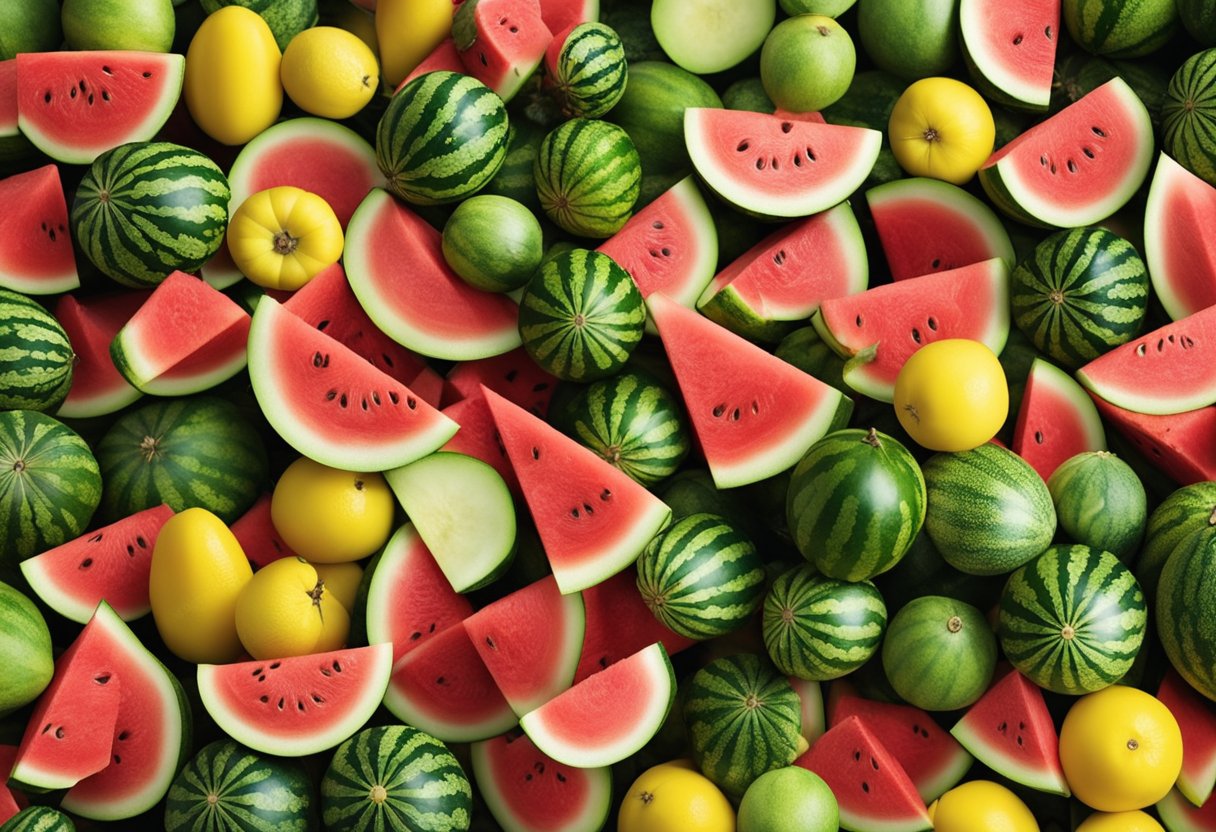
Choosing the best watermelon
- Inspect the appearance: Look for a watermelon with a strong, consistent stripe pattern. The green stripes should be a deep, dark green, while the pale stripes should be a creamy, light yellow1. A dull-looking watermelon is generally a good sign, as it indicates ripeness2.
- Checking the field spot: The field spot is the area where the watermelon rested on the ground while growing. A ripe watermelon should have a golden-yellow spot on its underside3.
- Thump test: Gently thump the rind of the watermelon with your hand. A ripe watermelon should produce a deep, hollow sound, similar to a knock on a door1. An unripe melon will have a higher-pitched resonance, while an overripe melon will sound more like a thud.
- Weight and size: A ripe watermelon should feel heavy for its size, indicating that it is full of water and sugar3.
By considering these factors during your visit to the grocery store, you can confidently select a ripe, juicy, and delicious watermelon to enjoy.
Growing and harvesting watermelons
Growing watermelons can be quite rewarding, and with the proper care, you can enjoy a delicious, ripe harvest. The key to successful watermelon cultivation is understanding the growth process, as well as knowing the right time to pick your fruit.
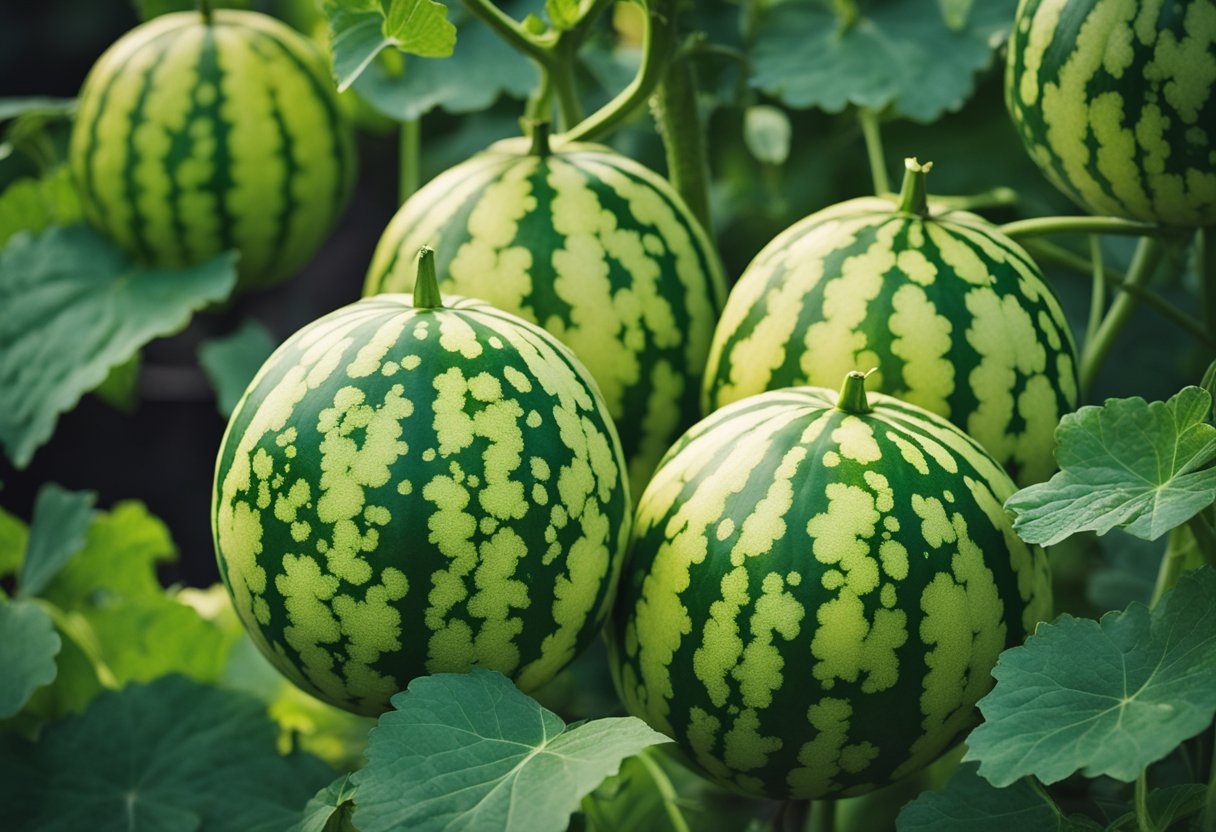
Knowing when to harvest
Determining the appropriate time to harvest watermelons is crucial for ripening and taste. Several factors can help you identify if your watermelon is ripe and ready to pick. Pay attention to the following indicators:
- Tendril: One reliable sign of ripeness is the tendril closest to the watermelon on the vine. As the fruit matures, this tendril will change from green and pliable to brown and dry. If the tendril is completely dried up and brown, the watermelon is likely ripe. (source)
- Ground spot: Another important indicator is the color of the watermelon’s bottom where it rests on the ground. An immature watermelon will usually have a white bottom, while a ripe one will have a cream- or yellow-colored bottom (source).
- Size: As watermelons grow and ripen, they will naturally increase in size. When they stop growing larger, it can be a sign that they are ready to be picked.
- Color: The color of the watermelon’s skin can also provide valuable information about its ripeness. The green color will become dull, and on striped melons, the color between the stripes will darken.
From the moment you plant your watermelon seeds, keep track of the calendar. Seed packets usually provide a date range for pollination and ripening, so they can serve as a reference point in the growing process.
By closely monitoring the growth of your watermelon and considering factors like the tendril, ground spot, size, and color, you’ll be able to enjoy a perfectly ripe and delicious harvest. Remember to stay patient and vigilant throughout the process, and soon you’ll be savoring the fruits of your labor.
Watermelon uses and recipes
Watermelons are a favorite fruit during the summer months, their sweet and juicy flavor makes them perfect to enjoy on hot days.
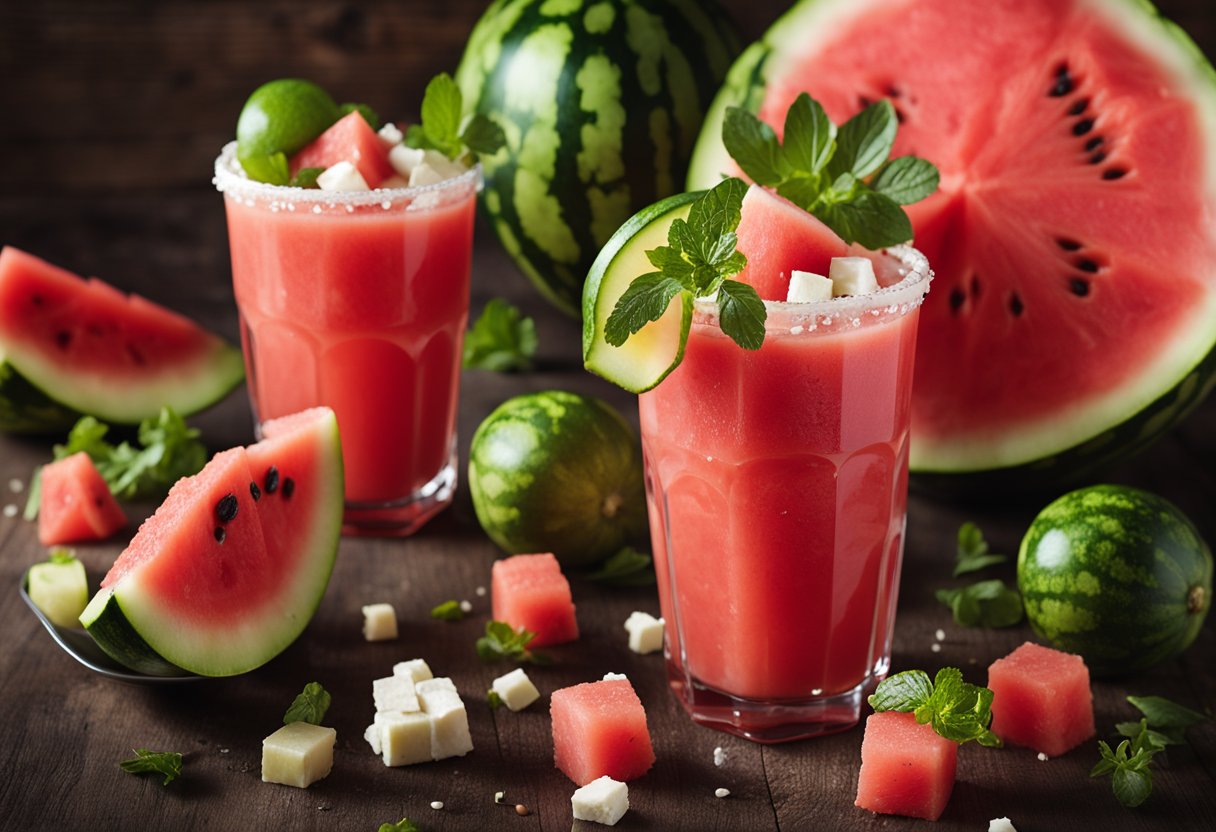
With their deep pink flesh and refreshing taste, watermelons can be used in various recipes that bring out their uniqueness and sweetness. This section will cover some delicious dishes that can be made with ripe watermelons.
Delicious dishes to make with ripe watermelon
Watermelon Fruit Salad: A simple and delightful dish that showcases the sweetness of watermelon is a fruit salad. Combine watermelon with other fruits like strawberries, blueberries, and kiwi to create a colorful and appetizing ensemble.
Watermelon Sorbet: Enjoy watermelon season with a refreshing watermelon sorbet. Blend watermelon, sugar, and a little lemon juice, then chill and freeze to make a smooth and light dessert.
Watermelon Salad: Combine watermelon with feta cheese, red onion, and mint leaves for a watermelon salad that balances sweet and savory flavors. Drizzle with olive oil and balsamic vinegar to finish.
Watermelon Ice: For a chilly treat, freeze small cubes of watermelon and use them as ice in your favorite drink, adding a burst of flavor to any beverage.
Watermelon Pie: Make a unique dessert by creating a watermelon pie, using watermelon chunks mixed with a creamy filling and set atop a graham cracker crust.
Watermelon Kabobs: Skewer watermelon pieces with other fruits like pineapple and grapes, then grill them briefly to bring out their natural sugars, making for a delicious and healthy snack.
Watermelon Gazpacho: Blend ripe watermelon with cucumber, bell pepper, and tomato for a cool and refreshing watermelon gazpacho, perfect for a light summer meal.
Watermelon Salsa: Combine diced watermelon with red onion, jalapeno, cilantro, and lime juice for a fruity and slightly spicy watermelon salsa that pairs well with grilled fish or chicken.
Watermelon Lemonade: Enhance your lemonade with the flavor of watermelon by blending fresh watermelon and combining it with lemon juice, water, and sugar for a refreshing watermelon lemonade.
Watermelon Cups: Make a fun and edible serving container by hollowing out small watermelons and filling them with fruit salad or a scoop of ice cream for a creative and tasty presentation.
Watermelon Spritzer: Mix watermelon juice, sparkling water, and a splash of lime for a thirst-quenching watermelon spritzer that can be enjoyed all summer long.
These are just a few of the numerous ways ripe watermelons can be incorporated into delicious dishes, showcasing their vibrant color and tantalizing sweetness. Enjoy watermelon season to the fullest by trying out these recipes and exploring new ways to savor this delightful fruit.
Ripe watermelon FAQs
Watermelons are a popular summer fruit and knowing when they are ripe is crucial for enjoying their sweet and refreshing taste. Let’s address some frequently asked questions about determining the ripeness of a watermelon.
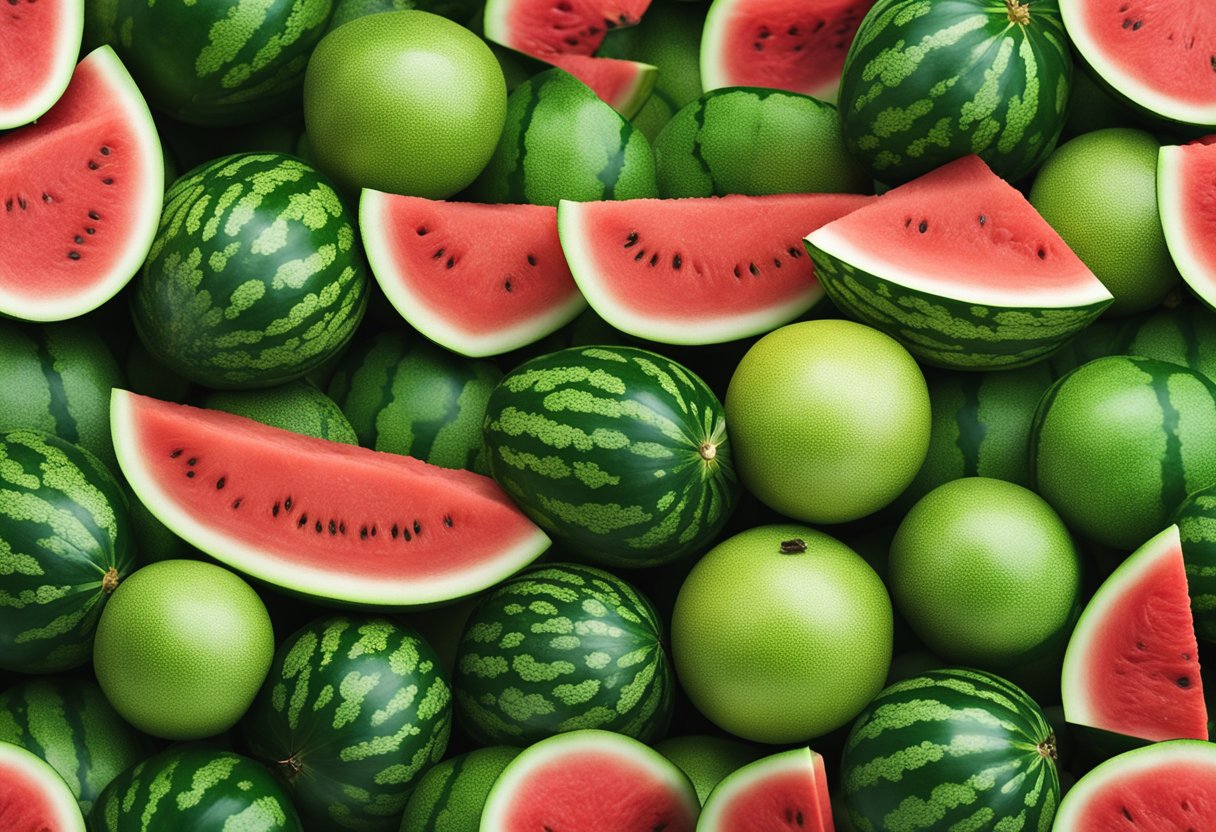
What signs indicate that a watermelon is ripe?
A ripe watermelon can be identified by several factors: the sound it makes when you tap it, its appearance, and its weight.
When you perform the thump test, a ripe watermelon should produce a deep, hollow sound, similar to a knock on the door. Unripe melons will have a high-pitched resonance, while overripe ones emit a dull thud.
How does appearance help determine ripeness?
A ripe watermelon should have a yellow field spot on its underside, indicating that it has ripened on the vine long enough. If the spot is pale white, the watermelon might not be ripe and could have been picked too soon.
When examining the outer shell, you should notice a rough contrast between the striping, sugar spots, or webbing patterns, which are the visible sugar concentrations. Additionally, the overall surface should have a matte finish rather than a glossy shine.
Does size and weight play a role in determining ripeness?
Yes, a ripe watermelon should feel heavy for its size. This indicates that it is full of water, which is a sign it has reached peak ripeness. A light or underweight melon might not be as sweet, juicy, or ripe.
Is the thump test the most reliable method?
The thump test is a popular and easy method for determining watermelon ripeness. However, relying solely on the sound may not always be accurate, as other factors such as appearance and weight should also be considered. Combining multiple tips will increase the chances of selecting a perfectly ripe watermelon.
How does a ripe watermelon smell?
A ripe watermelon should emit a slightly sweet aroma. If the fruit has an overly sweet or fermented scent, it might be overripe.
In conclusion, to find a perfectly ripe watermelon, consider multiple factors such as sound, appearance, weight, and smell. Using a combination of these methods will help ensure that you enjoy the sweet, juicy, and refreshing taste that a ripe watermelon offers during the summer months.
